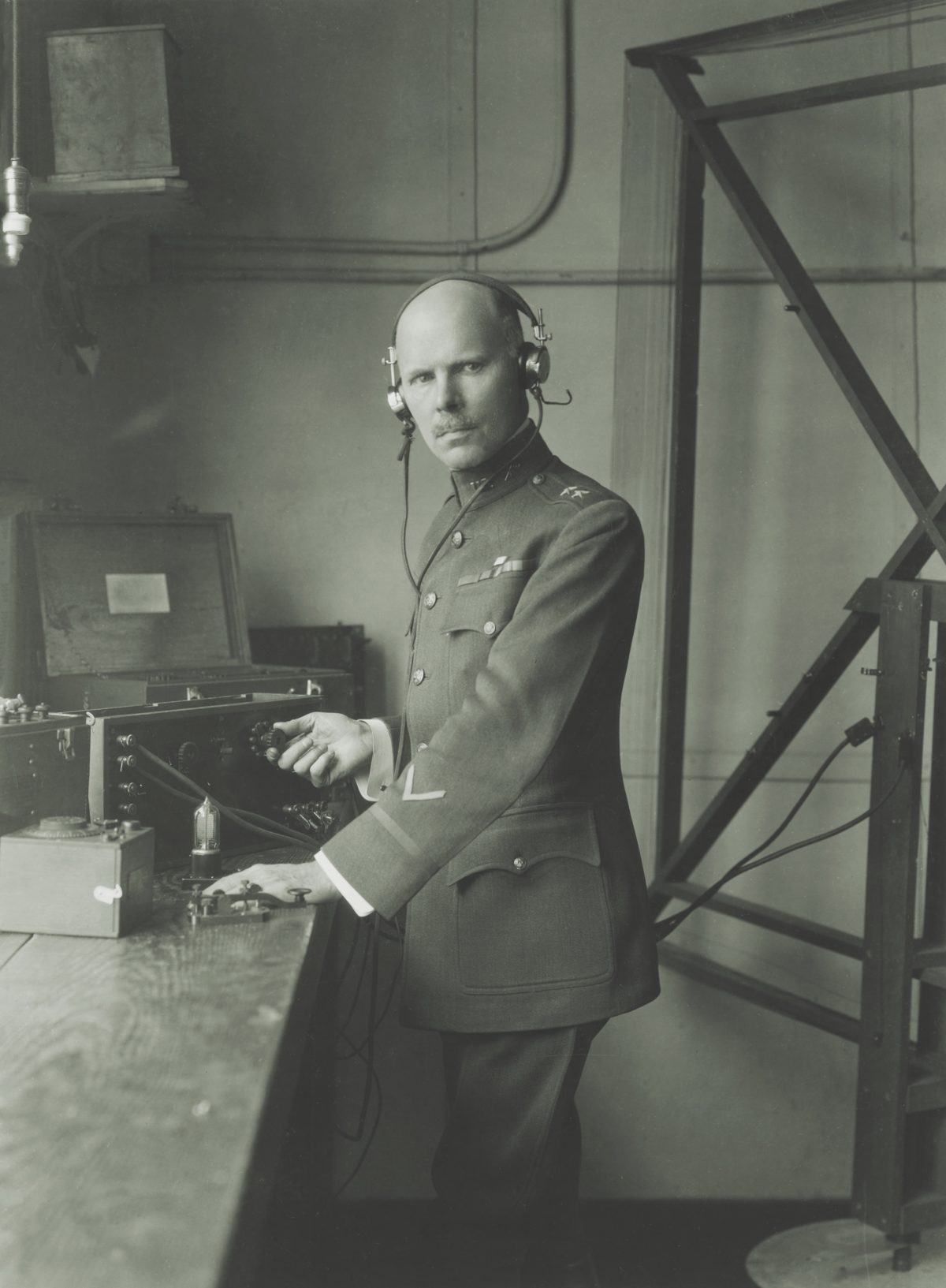In the spring of 1922, George Owen Squier, a major general in the U.S. Army, paused under a large tree in Rock Creek Park, the 1,700-acre preserve that snakes through the nation’s capital. After studying the tree for a moment, Squier pulled a coil of copper wire out of his pocket, grabbed one end of the wire, and tossed the other end into the air, snagging a lower limb. Then, reaching into the kit bag slung over his shoulder, he pulled out a device that resembled a telephone and attached it to the wire. With a hammer, he nailed the wire to the trunk of the tree.
The slim, balding man in his late 50s with a reddish mustache was not only the first officer in the U.S. Army with a doctoral degree but also a technology visionary who revolutionized telephone communication, helped build the nation’s first air force, and knew such pioneering figures as Alexander Graham Bell, who had been credited with inventing and patenting the first practical telephone; Guglielmo Marconi, the Italian inventor and electrical engineer who developed wireless telegraphy; and Orville and Wilbur Wright, the American aviation pioneers. Nevertheless, his unimposing physical appearance and odd behavior that day made it easy to for the park police officer who had been scrutinizing Squier from a distance to mistake him for a run-of-the-mill vandal.
“Get out of here and quit spoiling that tree!” the policeman admonished Squier, according to Homer Croy, a correspondent for Boys’ Life, who was tagging along with the general that day to write a profile of him for the popular monthly magazine.
Fortunately, Squier was able to convince the policeman that he wasn’t desecrating nature but pursuing a legitimate mission: demonstrating one of his most unusual inventions. In 1919, knowing that soldiers in the field couldn’t quickly communicate with headquarters over long distances, Squier had sought to patent a device that connected a radio transmitter and receiver to a tree and converted it into a towering antenna. That day in Rock Creek Park, to prove to the young readers of Boys’ Life that his device actually worked, he carried on a conversation with another operator 10 miles away.
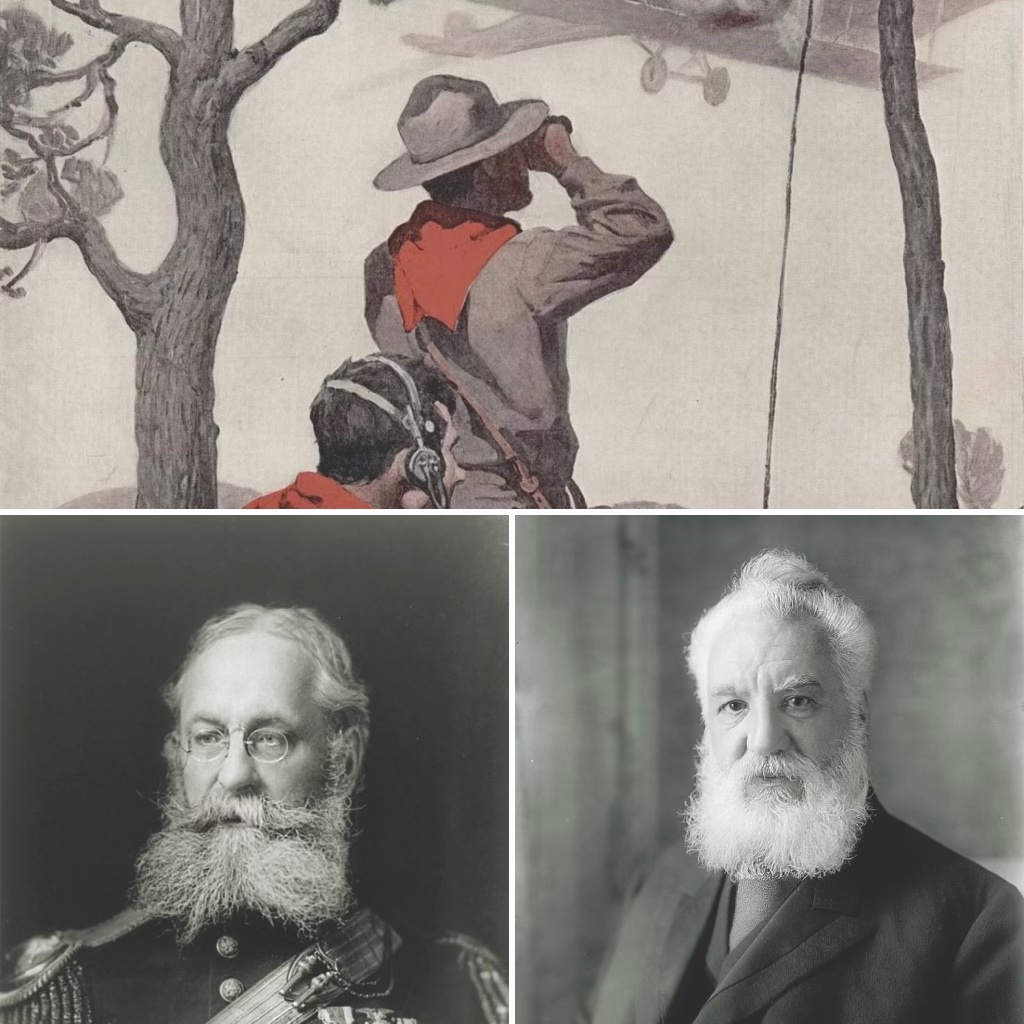
“Thus has it ever been in his life,” Croy later wrote in his profile of Squier. “Every time he has undertaken to do something there has been somebody to stop [him], to tell him he couldn’t.” But what might seem like hero-worshipping hyperbole was, in Squier’s case, true. He had overcome a hardscrabble, traumatic early life to become the first U.S. Army officer to earn a doctorate and to win election to the prestigious National Academy of Sciences. And while the idea of using trees for antennas never caught on, another of Squier’s brainstorms—“multiplexing,” which enabled the transmission of multiple simultaneous telephone calls over one wire—helped make possible the rapid growth of modern communication networks. As military aviation historian Charles Joseph Gross wrote, “He was at the forefront of those who brought science and engineering into the army.”
Born in 1865 in Dryden, Michigan, about 40 miles outside Detroit, Squier came along just in time for the Second Industrial Revolution. A host of technological advances, from electric lights and steel skyscrapers to the air brakes that made trains into reliable transportation, were forging a new world. But before Squier could make his mark on that world, he had to overcome the poverty and trauma of his youth.
Squier’s mother died when he was six years old. His father, a farmer and shopkeeper, was a deeply troubled man who struggled with addictions to alcohol and gambling and neglected his cornfields, according to a 2014 biography of Squier by Paul W. Clark and Laurence A. Lyons. When he succumbed to his vices and could no longer care for his children, George and his sister, Mary, were sent to live with their grandfather.
Squier was a good student, particularly gifted at mathematics. Nevertheless, when he reached age 14, his grandfather and his uncle made him quit school and set him up as an apprentice with a merchant in nearby Imlay City. Over the next two years, Squier rose from doing menial chores to working as a clerk in the store’s silk and satin department. Then, taking stock of his life, he realized that he didn’t want to become a merchant. He quit his job, found work on a local farm in exchange for room and board, and began attending high school.
Despite his industriousness, Squier might well have ended up as another young man whose dreams were crushed by poverty. But he made the most of a lucky break. In 1881, reading in a local newspaper about a competitive exam to get into the U.S. Military Academy at West Point, Squier decided to give it a shot and ended up being the only one of 30 local applicants from Michigan to get in. According to Croy’s story in Boys’ Life, Squier’s neighbors tried to convince him not to go, warning that he might not be smart enough and could suffer the humiliation of flunking out. “Then I’ll go back and try again,” he reportedly responded.
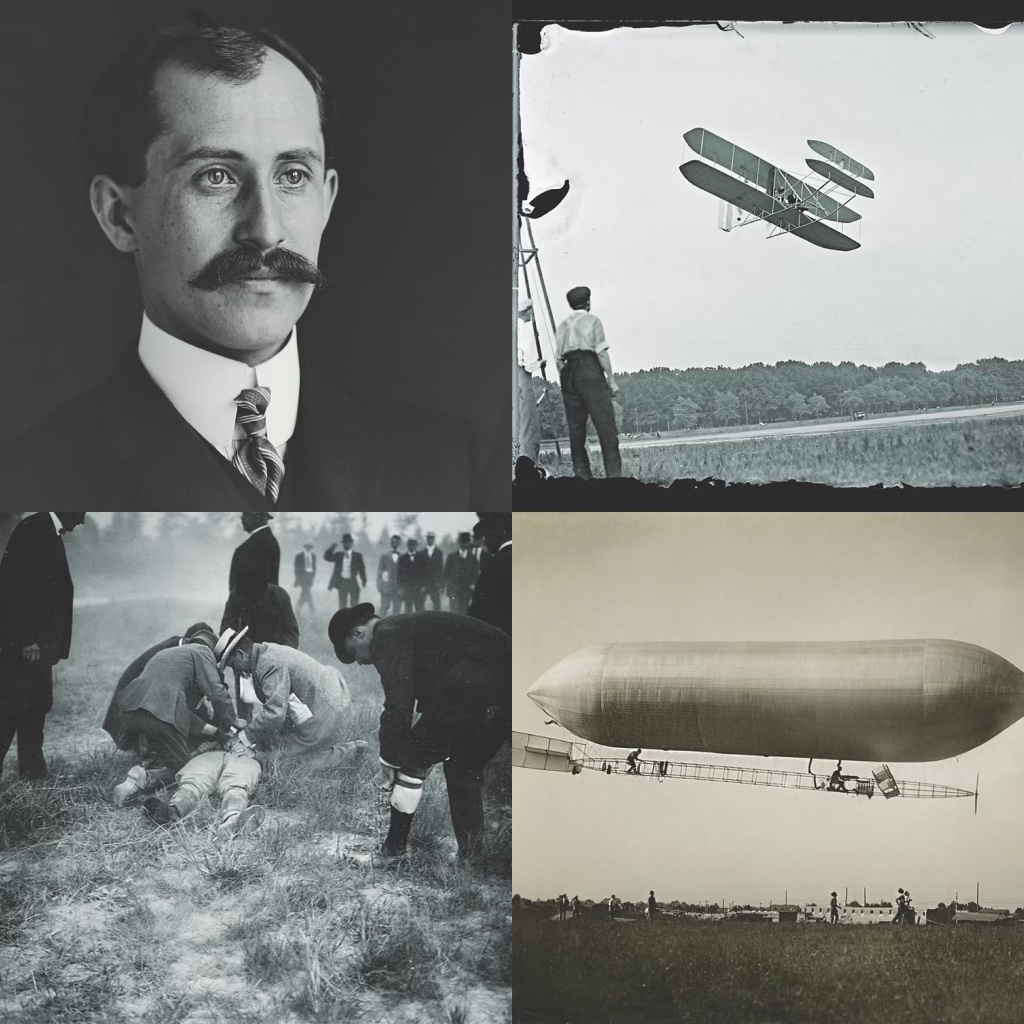
Entering West Point at age 18, Squier worked hard enough to be ranked seventh in his class when he graduated in 1887. Having developed a fascination for physics along the way, he was assigned to an artillery unit at Fort McHenry in Baltimore. This new position thrilled him, partly because Johns Hopkins University—one of the nation’s elite scientific institutions—was close by. Squier boldly asked for and eventually obtained permission to enroll in graduate school at Hopkins. By one account, Squier even convinced his superiors to excuse him from the post’s regular morning marching exercises so that he wouldn’t miss class.
At Hopkins, Squier studied mathematics, physics, and ballistics, among other subjects. He received his doctorate in 1893 after writing a dissertation on the electrochemical effects of magnetization. He was the first officer in the history of the U.S. Army to have earned a doctorate while in the service, and a reporter for the Baltimore Sun would later observe that his advanced degree made him an “unusual spectacle” in the army.
Squier went on to become an ordnance instructor at the U.S. Artillery School at Fort Monroe, Virginia, where he continued to pursue scientific endeavors in his spare time. He began a long collaboration with Albert Cushing Crehore, a physics professor at Dartmouth and Cornell who was regarded as one the nation’s most brilliant electrical engineers. Early on, the two men developed instruments for measuring the recoil of artillery pieces and the velocity of their projectiles.
Crehore’s scientific curiosity also ranged far and wide, and he and Squier soon delved into radio and telegraph technology. An article that appeared on the front page of the San Francisco Examiner in 1897 describes one of their inventions, the synchronograph, which used alternating current in telegraphy to achieve “marvelous speed in transmission,” making it possible to send messages to many recipients at once.
Squier’s interest in communications led him to transfer in 1898 to the U.S. Army Signal Corps, where he continued his research with Crehore. Brigadier General Adolphus W. Greely, the army’s chief signal officer, saw great promise in Squier and sent him to London to study wireless communication with Italian physicist Guglielmo Marconi, the inventor of the wireless telegraph.
In 1900 Squier was sent to the Philippines, where he was assigned to a ship that helped lay a system of undersea communications cables between islands in the archipelago nation. But, as he often did, Squier developed a more ambitious vision. He wrote a paper that examined the feasibility of, and potential routes for, a communications cable that would stretch from the Philippines across the Pacific Ocean to the U.S. mainland—an idea that caught the attention of government officials back in Washington and became the basis for a U.S. Senate committee report.
Squier and Crehore even tried to start an undersea cable business on the side, but the venture failed, and their long collaboration ended.
After his service in the Pacific, Squier was sent to San Francisco, where he became the army’s top signal officer in California. In 1903 he was put in charge of the new U.S. Army Signal School being established at Fort Leavenworth in Kansas. One of Squier’s responsibilities at the signal school was to keep tabs on advances in aeronautics, which in the conventional military thinking of the time meant lighter-than-air balloons.
Squier, though, saw the early promise of another means of flight: the airplane.
In January 1906, according to biographers Clark and Lyons, Squier went to the University Club in New York City to hear a presentation by Alexander Graham Bell, who had become an early advocate of aviation. Bell and Squier discussed the results of Wilbur and Orville Wright’s experimental trials in Kitty Hawk, North Carolina. Squier then wrote to Greely, his superior, and told him that on his way back to Fort Leavenworth he might pay a visit to the Wrights’ workshop in Dayton, Ohio, though it’s unclear whether he actually did.
The following year Squier came to Washington, D.C., to become the chief assistant to Brigadier General James Allen, who was succeeding Greely as the army’s chief signal officer. Possibly with Squier’s lobbying, Allen created a new aeronautical division within the Signal Corps, and assigned Squier to study airplanes, dirigibles, helicopters, and other flying craft. In that job, he drew up the first-ever specifications for a U.S. military airplane, which, when published in December 1907, created a sensation on both sides of the Atlantic. “Up to that time,” Flying magazine noted in 1916, “the heavier-than-air machine was considered out of the question as an engine of war.”
On a September day in 1908, in a field at Fort Myer in Arlington, Virginia, a crowd of 5,000 spectators gazed into the sky in wonder. The object of their rapt fascination was the Wright Military Flyer, a two-seater biplane that the U.S. War Department was looking to acquire from aviation pioneers Wilbur and Orville Wright as the nation’s first military aircraft.
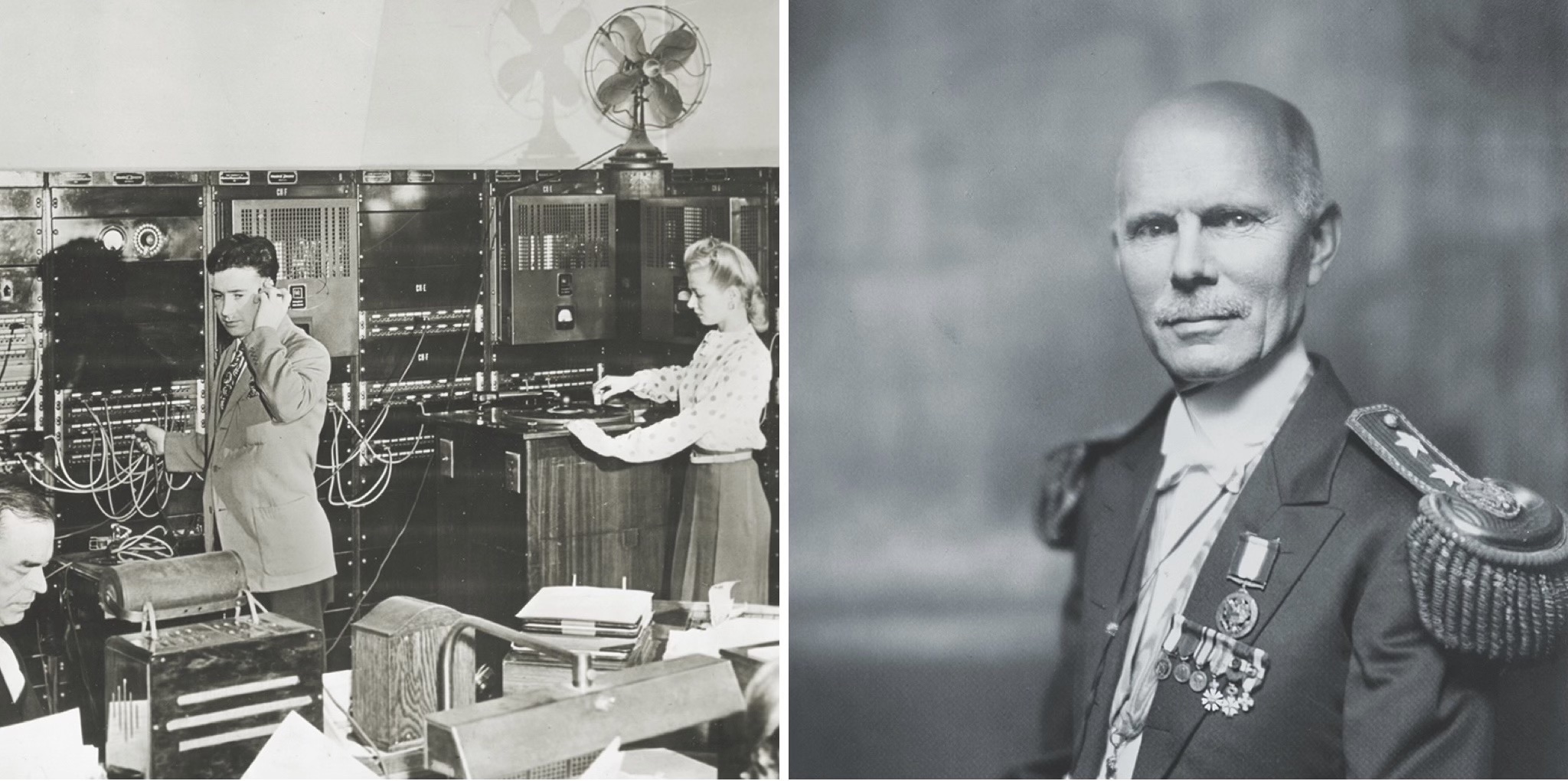
As the plane piloted by Orville Wright circled the field, Squier—his bald scalp concealed under a leather automobile drivers’ cap that he’d chosen for the occasion—sat in the passenger’s seat. He enjoyed a view that up to that point only a few men had ever experienced.
After staying aloft for 10 minutes—a new world record for a two-person flight—Wright landed, and Squier was surrounded by a gaggle of reporters eager to hear about his experience. “That was bully,” Squier said. “I’d have to exhaust the list of descriptive adjectives if I started out to describe the sensations of the trip.”
Fortunately for Squier, he wasn’t in the air with Wright five days later, when the aircraft malfunctioned and crashed. Wright broke a leg and some ribs, and his passenger, Lieutenant Thomas Selfridge, fractured his skull. Selfridge was the first person to die in an airplane crash. Despite the tragedy, U.S. Army officials were sufficiently impressed with the airplane that they allowed the Wright brothers to eventually resume their trials, and the army paid them a $5,000 bonus on their $25,000 contract after they managed to exceed the target speed of 40 miles per hour it specified.
The trials were just the start of Squier’s decadelong effort to build military aviation from an experimental curiosity into an integral part of the nation’s war-fighting capacity, with thousands of pilots and planes. In December 1908, addressing the American Society of Mechanical Engineers in New York City, Squier predicted that in the future, wars would be fought in the skies as well as on the ground. As he saw it, air combat would make borders essentially obsolete because there would be no way to prevent aircraft from invading a country. “We may, therefore, regard the advent of military ships in the air as, in a measure, obliterating present national frontiers in conducting military operations,” Squier told his audience.
But even as he was trying to advance military aviation, Squier was also working on a communications breakthrough. In 1910 he developed a technology called multiplexing, which enabled a telephone line to carry multiple signals of different frequencies—in a sense, radio over wires. In September of that year he demonstrated the concept to Allen by transmitting multiple messages from the Signal Corps laboratory in Washington, D.C., to another facility at the Bureau of Standards, seven miles away, on a line that was also transmitting a phone call.
Squier’s invention, to which he gave the odd name “wired wireless,” made headlines.
“This army scientist has shown how not only to make one wire do the work of many, but to do things no wire ever did before,” John Elfreth Watkins Jr., a civil engineer and futurist, observed in a long profile of Squier that appeared in the Washington Evening Star and other newspapers in 1911. Watkins, who interviewed Squier at his desk in the War Department in Washington, marveled at how such a bland-looking, seemingly unexceptional man could turn out to be such a genius. “One could go through the building and pick out a score of hundred-dollar-a-month clerks who looked more like either the savant or the man at arms,” he wrote.
When Watkins asked Squier whether it would be practical to stretch a telephone wire between Washington and San Francisco and transmit a dozen conversations simultaneously, Squier upped the ante.
“Not only that,” Squier explained to Watkins, “but conversations with Cincinnati, St. Louis, Denver, and all intermediate points.”
Squier’s breakthrough also had enormous military importance, because it enabled multiple parts of an army to communicate with headquarters all at once over a telephone line, rather than having to rely on wireless communications that enemies could eavesdrop on. Allen quickly moved to take charge of the invention and supervise the patent process. As a result, Squier’s patents were all “dedicated to the public,” which enabled not only the U.S. military but anyone else to use the technology without paying Squier at all.
Though Squier probably didn’t have a choice in the matter, newspaper articles of the time portrayed the open-
sourcing of his invention as a sign of his selflessness. “His invention is revolutionizing the existing system of telephone communication,” the Washington Post noted in 1914. “He might have sold it for a vast sum, but he gave it to the world for nothing.”
Years later, Squier would come to regret having given up control of his patents—and therefore their money-making opportunities. But he also took pride in the role that he’d played in improving global communications. As he told Flying magazine in 1916, he envisioned a world in which more efficient and less expensive messages would help promote “better understanding between the people of the different countries of the world.”
In 1912 Squier was sent to London to serve as a military attaché at the U.S. embassy there. During that time, he became friends with Lord Horatio Kitchener, the British secretary of state for war, who secretly gave Squier permission to observe British forces on the Western Front, outfitting him in a British officer’s uniform. Squier sent a detailed report on the war to the U.S. War Department. One of his particular focuses was the use of airplanes by Allied and German forces—not just for reconnaissance, but for attacking the enemy.
In May 1916 Secretary of War Newton D. Baker brought Squier back from London to head the Aviation Section of the Signal Corps, which had been struggling and was racked with internal conflict. It was a temporary post for Squier, whom Baker had already slated to replace Brigadier General George Scriven as the army’s chief signal officer the following year. But it gave Squier a chance to observe firsthand the woeful state of aviation in the army, which had fewer than two dozen trained pilots and not a single unit ready for action. He knew that the United States was now lagging badly behind in deploying airplanes for military purposes.
Squier quickly seized the opportunity to fix the problem. In January 1917 he accompanied Scriven to an appropriations hearing held by the U.S. House Committee on Military Affairs. Scriven quickly came under sharp questioning about how airplanes were being used in the war in Europe and why the army hadn’t developed the capability to direct field artillery fire from the air, as the European combatants did. “How does it happen that we have not done any of that?” Representative Julius Kahn, a California Republican, demanded to know. After Scriven struggled to answer questions about the cost and durability of airplanes, Squier took over. He asked the committee to go into an executive session closed to the public, so he could share with them what he had seen on his secret visits to the front.
Squier then proceeded to describe British air squadrons in detail, down to the typical number of flight hours that a British aircraft engine lasted. He also explained what it would take to suitably equip a U.S. airplane and provided a vivid description of aerial combat, based on his experience flying as an observer with the British.
“It would appear that what we want is not a large gun with a few number of rounds, but a small-caliber gun with a large number of rounds,” Squier told members of the House committee. “You get the upper berth and come at the opponent by gravity, shooting through the propeller, and you only have a very short time in which to shoot. You then go by him at the rate of a hundred miles an hour, and you come back again, if you are faster than he is.”
The Capitol Hill lawmakers were fascinated. “How close do these machines come to each other in a fight?” one of them asked.
“They have actually rammed each other,” Squier said. “It is a most thrilling thing to watch them.”
Squier confidently predicted that after the war was over, nations would see airpower as so important that they would continue to build air forces in peacetime, even as their armies shrank in size. “They realize it is an asset that is going to remain,” he told the members of the committee.
When the United States entered World War I several months later, it had only “a handful of fliers and very few training planes,” Squier recalled in a 1931 newspaper article. By then he was the head of the Signal Corps, and he directed his staff to develop a plan for a massive U.S. military aviation program, with thousands of planes. In promoting the buildup, he wasn’t above resorting to drama. In a June 1917 press release, for example, Squier urged Americans to support construction of what he called “an army in the air.”
“Sweep the Germans from the sky, blind the Prussian cannons, and the time would be right to release an enormous flock of flying fighters to raid and destroy military cams, ammunition depots, military establishments of all kinds,” Squier proclaimed. “The firing upon troops by machine guns from airplanes is becoming commoner and more accurate. Once given an upper hand, the flying machines become frightful engines of destruction.” While he conceded that “six hundred million dollars looks like a lot of money,” he assured taxpayers that “considered in terms of winning the war, it is a positive bargain.”
When War Department officials balked at financing what Squier wanted, he boldly bypassed the General Staff and took the proposal directly to Secretary of War Baker, who approved it and sent it to President Woodrow Wilson. Congress eventually provided $640 million—more than $13 billion in today’s dollars—to finance the massive effort. Special railroad lines were built to the Pacific Northwest to transport the spruce needed to build planes in the United States and Europe, and millions of yards of linen fabric were woven. Some 108,000 acres of castor bean seeds were planted to produce high-grade lubricant oil. Squier created a pair of military laboratories—one at Fort Monmouth, New Jersey, for radio research and the other at Langley Field, Virginia, for aviation. When the war ended, the U.S. Army—aided by the acquisition of nearly 5,000 French-made airplanes and almost 260 from the British, as well as more than 1,200 built in the United States—had nearly 100 aircraft squadrons in Europe.
By the time Squier retired from the military as a major general in December 1923, the U.S. Army’s aviation efforts had grown under his supervision to a massive operation with 12,000 officers and 135,000 men.
In retirement, the unmarried Squier wintered in Florida and split the rest of the year between Washington and his hometown in Michigan, where he started another, not-for-profit project. When he got the nostalgic urge to visit the old swimming hole in the woods that he’d enjoyed as a boy, he discovered to his dismay that the site had been turned into a dump. Squier bought the 200-acre tract, cleaned it up, and let the woods grow back to its natural state. He then founded the Dryden Community Club, a nature preserve and country club that anyone could enjoy, free of charge. “It is a haven for those who seek beauty, rest and peace, full of surprises such as woodland trails, mineral springs, waterfalls, lagoons and rustic retreats,” noted a 1934 article in the Detroit Free Press. (Today the recreational area is known as General Squier Memorial Park.)
Squier spent much of his remaining years trying to make money from multiplex communications. But he faced a big obstacle, since the army had required him to make his patents “dedicated to the public” and American Telephone & Telegraph Company had begun using his invention in its telephone system. Squier didn’t mind the government using the technology he had created, but it irked him that private companies were profiting from it instead of him.
In March 1922, as Squier was finishing his army career, he filed a lawsuit against AT&T in federal court in New York, arguing that “public” meant anyone doing government work. The giant company disagreed, also arguing that in any case, it hadn’t infringed on his patents because his invention was being used in combination with scores of other innovations the company had purchased. “By itself, it is argued,” the New York Times wrote of AT&T’s filings in the case, “General Squier’s invention would be worthless to the company.”
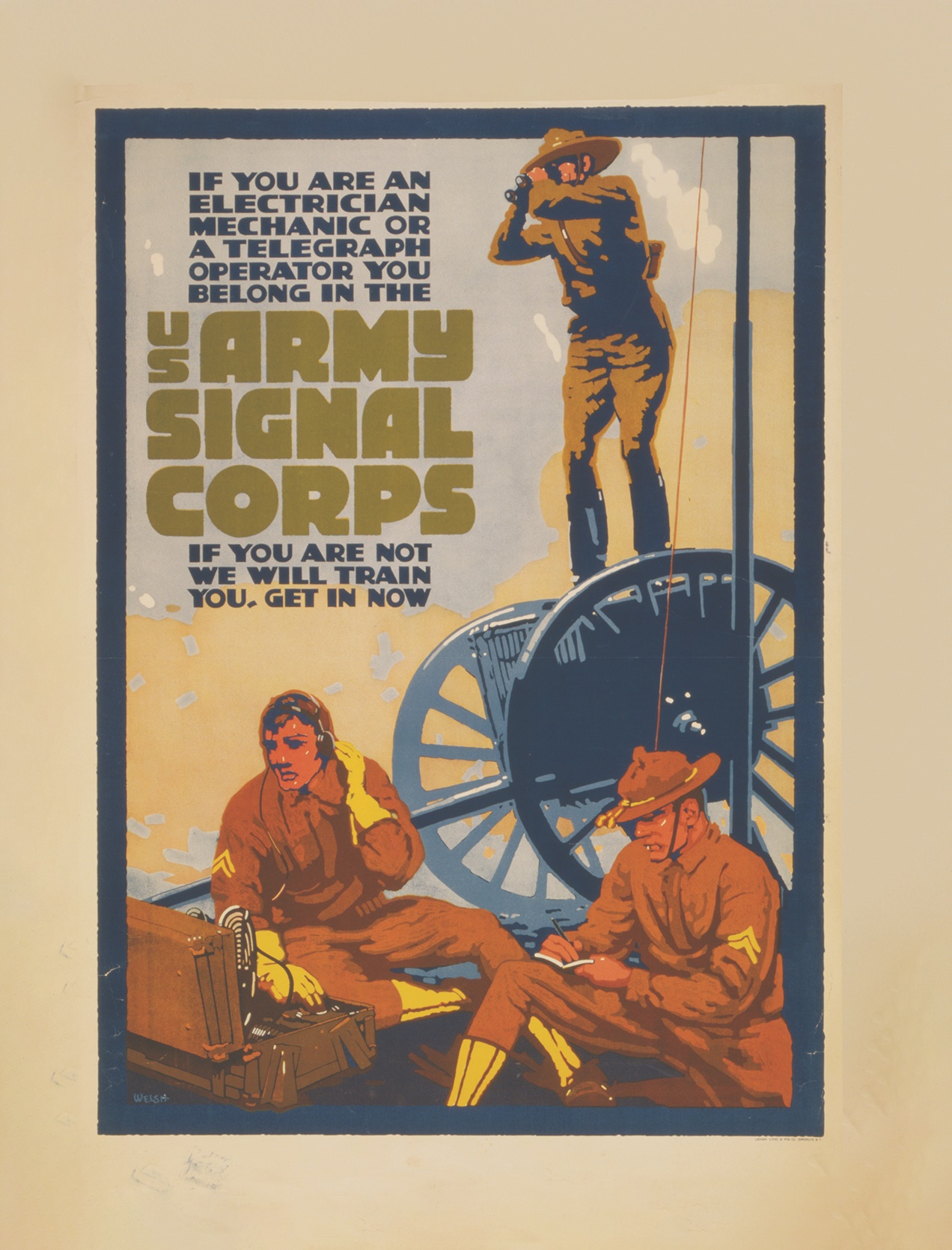
Squier, meanwhile, moved ahead with a scheme to use his technology in an entirely new way. Instead of telephone conversations, he wanted to transmit live and recorded music through wires into subscribers’ homes for a few dollars a month—sort of the 1920s equivalent of modern music-streaming services such as Pandora and Spotify. Squier licensed his inventions to the North American Company, a public utility, which formed a company called Wired Radio with the idea of using its power lines as the network. Wired Radio started test-marketing the service to customers in the New York City borough of Staten Island.
Wired Radio’s musical programs were transmitted into homes through a small black box that a customer plugged into an electrical socket, like any other appliance. A February 1924 wire-service feature described how a customer might use it: “To ‘tune in,’ he simply turns on his electric light switch and turns the dial until the sounds are audible. Either through headphones or a loudspeaker, he hears orchestra music, lectures, songs, news dispatches and all the other features that make up a complete radio program.”
Seven months later, though, Squier’s effort to monetize his ingenuity suffered a major setback when a federal judge ruled that AT&T hadn’t infringed his patents because the phrase “dedicated to the public” embraced private companies. The following May, the U.S. Circuit Court of Appeals upheld the ruling. “We are satisfied that the plaintiff wished to be generous in 1911,” the appellate judges wrote. “That he now regrets that generous emotion is immaterial.”
Nevertheless, Squier persevered in the years following his setback in the courts, pushing his dream of making a fortune from wired radio. In an interview for a 1927 story in the New York Times, he described an expanded business plan in which music and other programming would be piped into customers’ homes through power lines and possibly telephone wires as well. He said the “monophone,” as he had taken to calling the technology, was superior to broadcast radio because signals wouldn’t be blocked or distorted by steel buildings in big cities. “I don’t believe there will ever be any trouble in collecting revenue from broadcasting of a high-standard program which is delivered by wire to the home,” Squier told the Times.
But Squier never lived to see his music service become a success. When he died of pneumonia at George Washington Hospital in Washington, D.C., in 1934, his obituary in the Washington Star didn’t even mention Wired Radio or the monophone. Later that same year the company, apparently drawing inspiration from the success of Kodak, the camera and film manufacturer, officially adopted a catchier brand name: Muzak. (By some accounts, Squier himself came up with the name.) The first Muzak recording, made in 1934, was a medley of “Whispering,” “Do You Ever Think of Me?,” and “Here in My Arms” by Sam Lanin and His Orchestra.
Over time, Muzak switched from the home consumer market to providing background music for hotels, restaurants, stores, and, most famously, elevators. Muzak was sold in 2011 and has been absorbed by Mood Media, a service that provides licensed music to businesses.
Though Squier never made the fortune that he hoped for from his inventions, he profoundly changed the U.S. military by helping to establish science and research and development as an important part of its mission. In doing that, Squier exemplified the stubbornly iconoclastic, compulsively creative spirit displayed by so many great American inventors. “I never started anything in my life that somebody didn’t tell me it couldn’t be done,” he explained to Boys’ Life in 1922. “I’m used to it now. I’ve almost come to think it’s a healthy sign. So I listen politely—and then go ahead.” MHQ
Patrick J. Kiger is an award-winning journalist who has written for GQ, the Los Angeles Times Magazine, Mother Jones, Urban Land, and other publications.
historynet magazines
Our 9 best-selling history titles feature in-depth storytelling and iconic imagery to engage and inform on the people, the wars, and the events that shaped America and the world.


